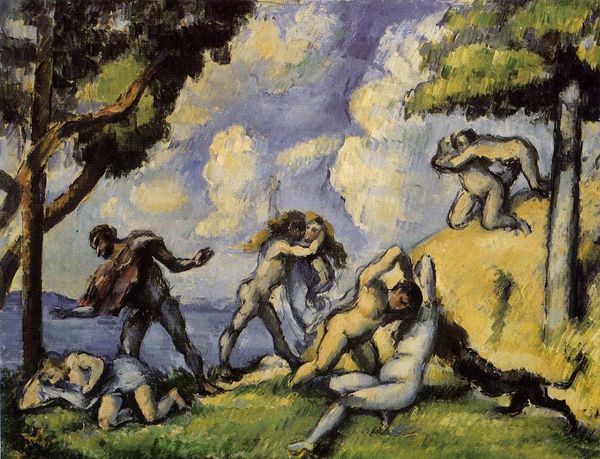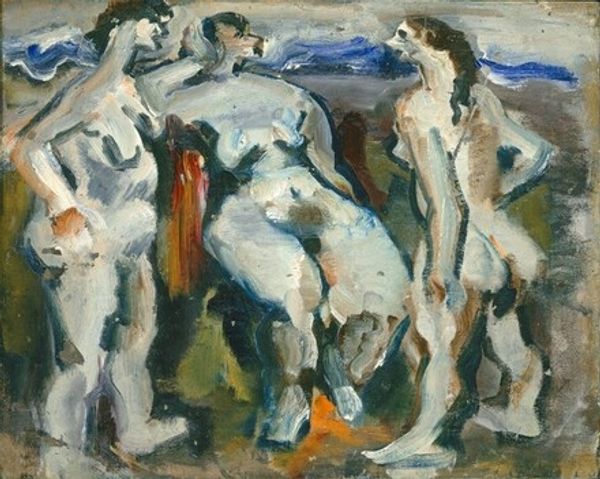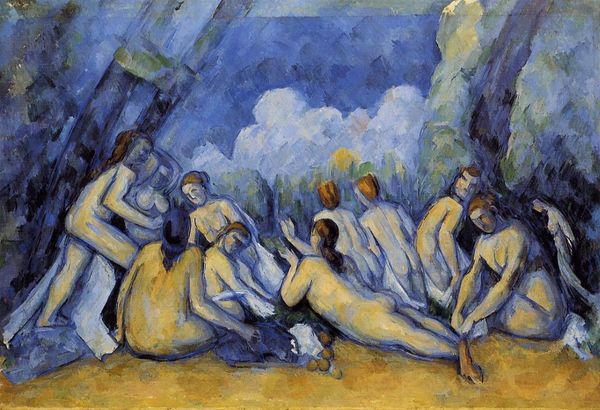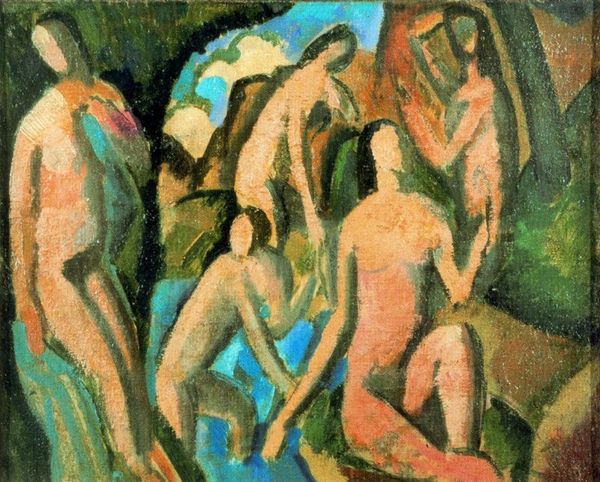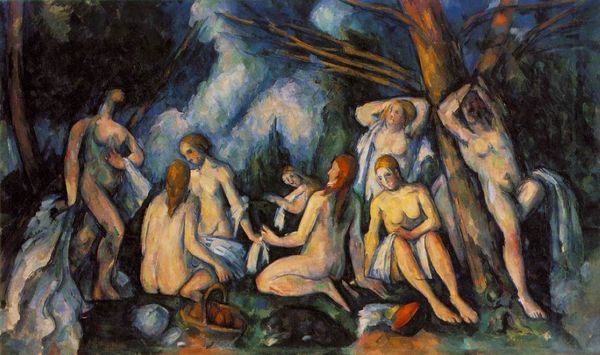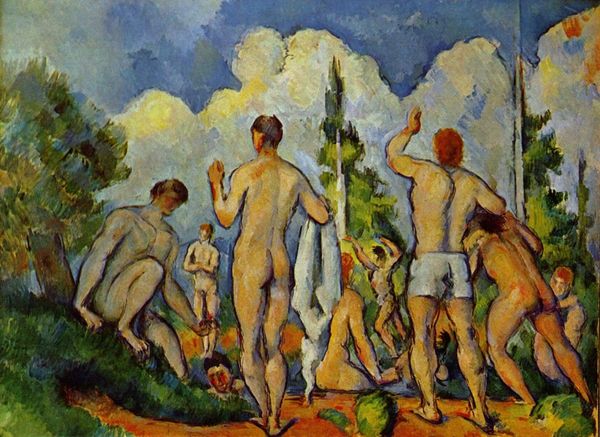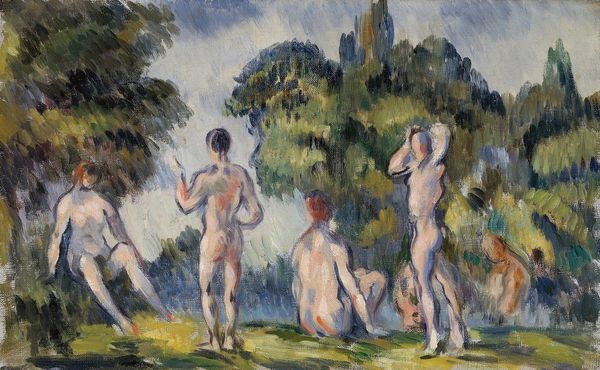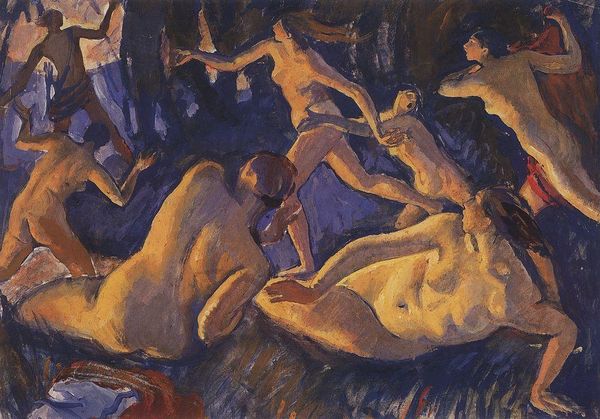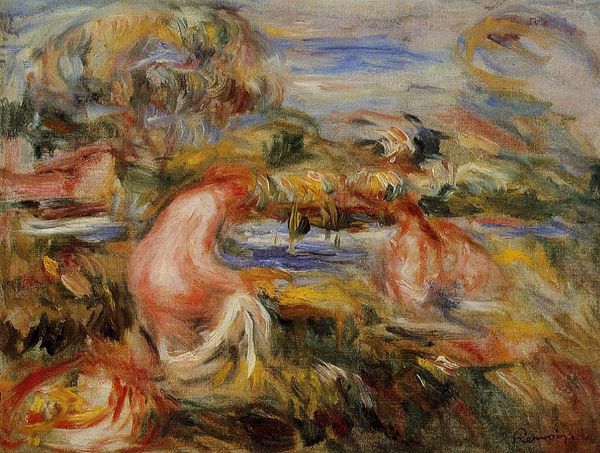
painting, plein-air, oil-paint, impasto
#
impressionist
#
painting
#
plein-air
#
oil-paint
#
landscape
#
impressionist landscape
#
figuration
#
impasto
#
post-impressionism
#
nude
Dimensions: 20 x 33 cm
Copyright: Public domain
Curator: Take a moment to observe Paul Cézanne's oil on canvas, “Study of Bathers," created circa 1902. What's your initial response? Editor: Well, there's definitely an interesting dynamic at play. The brushstrokes create a sense of fragmented movement and it almost feels unsettling despite the tranquil theme of nude bathers in nature. Curator: Cézanne returned to this subject, bathers, repeatedly throughout his career. In this work, he departs from traditional nude figure studies. It exists as a moment of examining changing ideas of gender and form as it pushes the boundaries of acceptable imagery within early twentieth century painting. Editor: Absolutely. And that tension is part of what grabs me. Considering how museums and institutions shape our views of art, this work perhaps offers an invitation to discuss a more nuanced approach to figuration by challenging traditional societal expectations. The composition is so dynamic – these figures aren't passive. What kind of landscape are they inhabiting? Curator: I am very drawn to the intersectional narrative surrounding the nude. How these female bodies claim space and how race, and perhaps even class impact such depictions throughout art history. In a painting like this, it pushes against expectations and is very provocative, still today. Editor: Cézanne often exhibited outside established academies. How did this context shape public perception of his artwork, especially pieces like this one featuring the nude? I also see some similarity between this work and the evolution towards Cubism and abstraction at that time, particularly how space is fractured. Curator: Right, the fracturing could also suggest to the viewer that our perspectives are not fixed but layered through experience, the art shifts how we perceive form within patriarchal structures. Considering cultural studies, does his interpretation provide avenues for female empowerment and self-representation? Does the setting allow for any readings that reflect environmentalism or a post-colonial gaze, regarding exploitation or harmony with nature? Editor: Those are all very crucial considerations. For me, viewing this work today necessitates a look at Cézanne's status as an independent. It compels us to discuss the dynamics of influence, the development of his themes in painting and his public image at the time. Thank you for allowing a space for this analysis of the piece. Curator: And thank you, for helping highlight new intersectional points of engagement for all of us when observing art in a more open world!
Comments
No comments
Be the first to comment and join the conversation on the ultimate creative platform.
